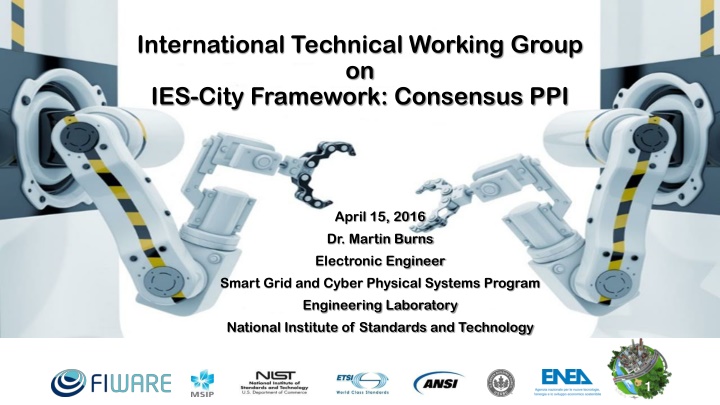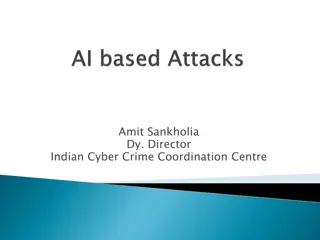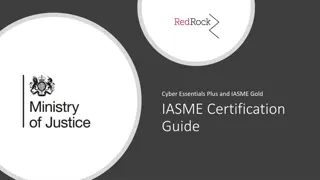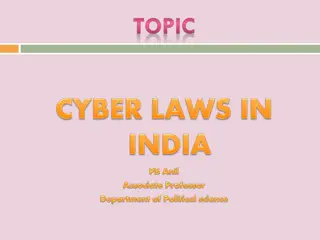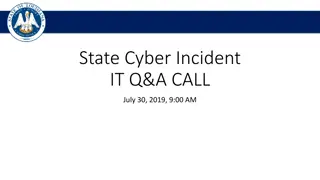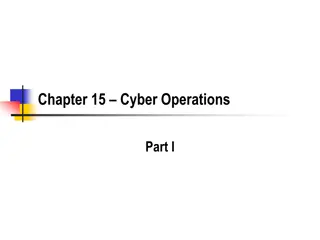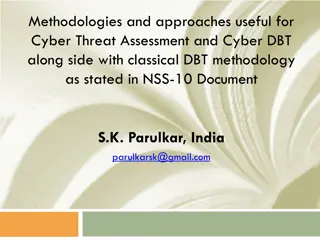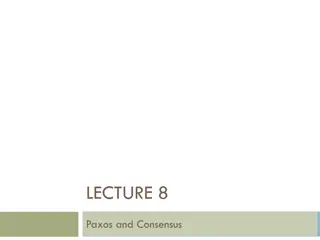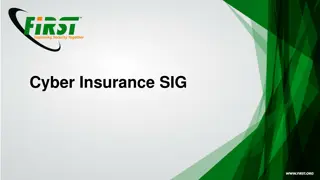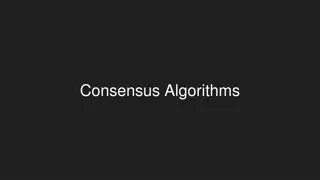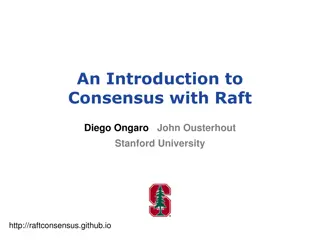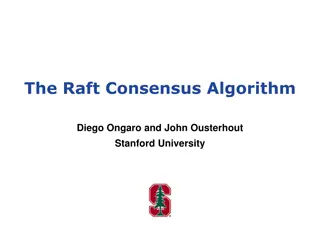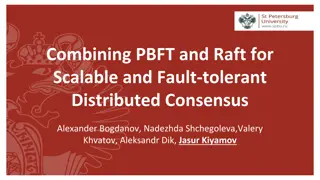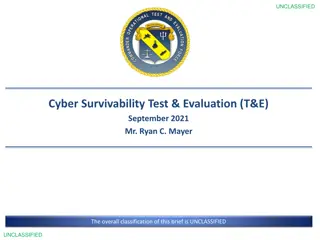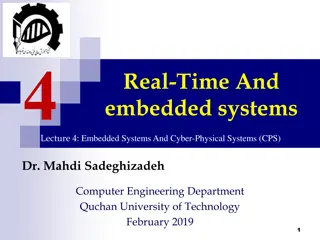Consensus Framework for Interoperable Cyber-Physical Systems
International Technical Working Group on IES-City Framework established the Consensus Pivotal Points of Interoperability (PPI) to balance standardization and innovation, ensuring seamless integration of diverse technologies in Cyber-Physical Systems (CPS) architecture.
Download Presentation

Please find below an Image/Link to download the presentation.
The content on the website is provided AS IS for your information and personal use only. It may not be sold, licensed, or shared on other websites without obtaining consent from the author.If you encounter any issues during the download, it is possible that the publisher has removed the file from their server.
You are allowed to download the files provided on this website for personal or commercial use, subject to the condition that they are used lawfully. All files are the property of their respective owners.
The content on the website is provided AS IS for your information and personal use only. It may not be sold, licensed, or shared on other websites without obtaining consent from the author.
E N D
Presentation Transcript
International Technical Working Group on IES-City Framework: Consensus PPI April 15, 2016 Dr. Martin Burns Electronic Engineer Smart Grid and Cyber Physical Systems Program Engineering Laboratory National Institute of Standards and Technology 1
Pivotal Points of Interoperability - PPI If you standardize everything, you freeze out innovation. If you standardize nothing, you get non-interoperable clusters that can t be easily integrated. The principle of Pivotal Points of Interoperability is to find consensus standardized interfaces that deal with composition of CPS without constraining innovation. 2
Pivotal Points of Interoperability (PPI) With Pivotal Points of Interoperability Independent technology deployments PPI Minimize distance to interoperability PPI PPI App Diversity Potentially large distance to interoperability 3
Some potential PPIs Domain-specific Data/Semantic/Information Models Separate PII from Data Standard metadata about objects, measurements, time, cost REST APIs IP Networking Transport Layer Security (TLS) Certificate Authentication Role Based Access Control OAuth 2.0 to establish third party access and regulate roles 4
How to Discover Consensus Architecture/ Framework A Architecture/ Framework B Possible Extension Points Common Pivotal Points of Interoperability Process: 1) Transform architectures to CPS Framework normal form Transform deployments to CPS Framework normal form Compare results of 1) and 2) Broaden consensus of intersections Document Smart Cities Framework 2) 3) 4) 5) Union of Applications Architecture/ Framework C 5
Key Goals of the Framework Establish a common nomenclature and structure for understanding and developing CPS and CPS architectures similar to the role that the ISO 7 Layer Model has provided for communications CPS Framework Facets Conceptualization Realization Assurance Domains Functional Use Case, Requirements, Design / Produce / Test / Operate Argumentation , Claims, Evidence Business Manufacturing Aspects Human Trustworthiness Transportation Activities Timing Artifacts (properties) Energy Data Boundaries Healthcare Composition Model of a CPS CPS Assurance CPS Lifecycle . . . Domain 7
Aspects Groupings of Concerns Aspects are high-level groupings or categories of concerns. Concerns represent interests in a system and may be viewed as relevant by one or more stakeholders Concerns about function including sensing, actuation, control, communications, physicality, etc. Concerns about enterprise, time to market, environment, regulation, cost, etc. Concerns about human interaction with and as part of a CPS. Concerns about trustworthiness of CPS including cybersecurity, privacy, safety, reliability, and resilience. Concerns about time and frequency in CPS, including the generation and transport of time and frequency signals, timestamping, managing latency, timing composability, etc. Concerns about data interoperability including fusion, metadata, type, identity, etc. Concerns related to demarcations of topological, functional, organizational, or other forms of interactions. Concerns related to the ability to compute selected properties of a component assembly from the properties of its components. Compositionality requires components that are composable: they do not change their properties in an assembly. Timing composability is particularly difficult. Concerns about the lifecycle of CPS including its components. Functional Business Human Trustworthiness Timing Data Boundaries Composition Lifecycle 8
Analysis Worksheet IIRA detailed mapping IOTA detailed mapping Aspect Concern Description PPI This row marks the beginning of the functional aspect section and represents all concerns of the aspect Concerns related to the ability of the CPS to effect change in the physical world. Functional 6 D1.5-3.5, D1.5-4.2.2 Functional actuation 6.2:590, 6.2:610 D1.5-3.3.2, D1.5-3.3.3 6.2:595, 6.3:670, 6.5:750, 9.2:375, 12.0:825, 12.1:830, 12.2:860, 12.3:910, 12.5:1045 Concerns related to the exchange of information between the CPS and other entities. D1.5-3.3.2, D1.5-3.3.3, D1.5-3.5.2.4, D1.5-3.6, D1.5-4.2.2.6, D1.5-4.2.3 Functional communication IPV6 for all node end points Ability of a CPS to control a property of a physical thing. There are many challenges to implementing control systems with CPS including the non- determinism of cyber systems, the uncertainty of location, time and observations or actions, their reliability and security, and complexity. Concerns related to the ability to monitor and, if necessary, modify a CPS or its function. 6.1:530, 6.2:575, 6.2:615, 6.2:590, 6.2:640, 6.3:670, 6.3:685, 6.2:610, 8.0:100, 9.3:445, 15.0:1355, 15.1:1355, 15.2:1380, 15.3:1455 6.5:750, 6.6:765 Functional controllability D1.5-3.5.2.5, D1.5-4.2.2.8 Functional functionality Concerns related to the function that a CPS provides. Concerns related to the ability to measure the characteristics of the CPS.6.3:670, 6.3:675, 6.3:680, Functional measurability 6.3:685 D1.5-3.5.2.5, D1.5-4.2.2.8 9
